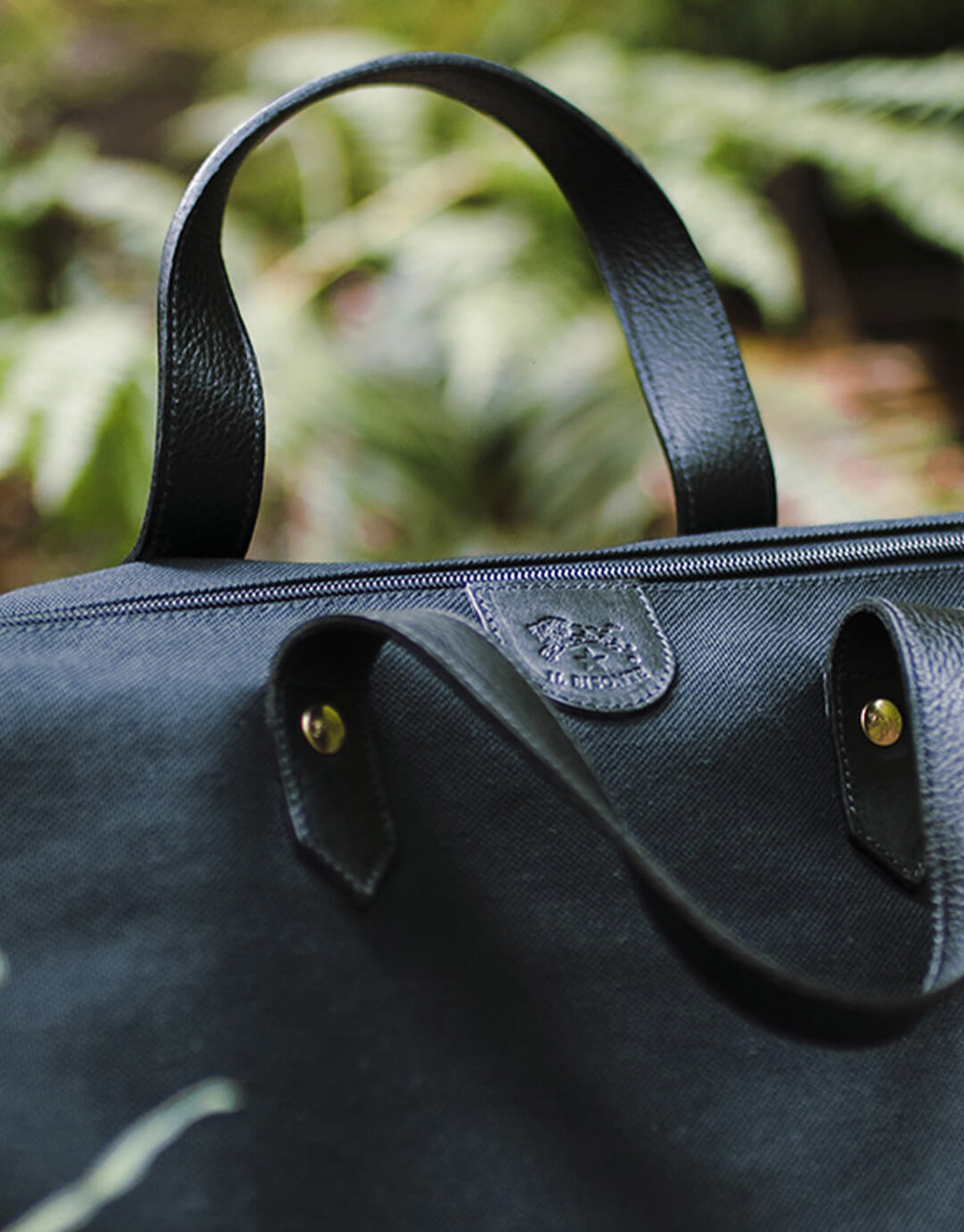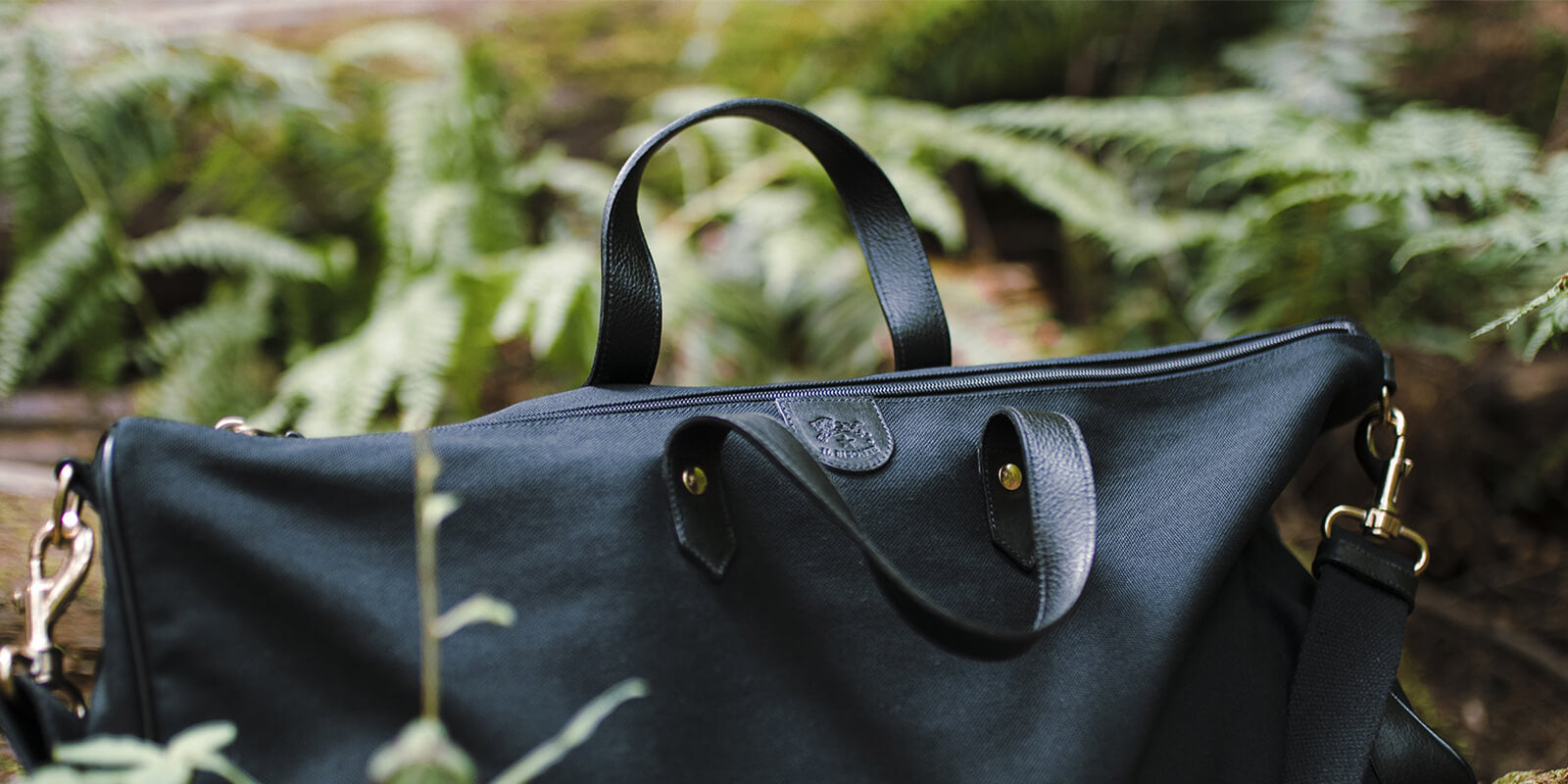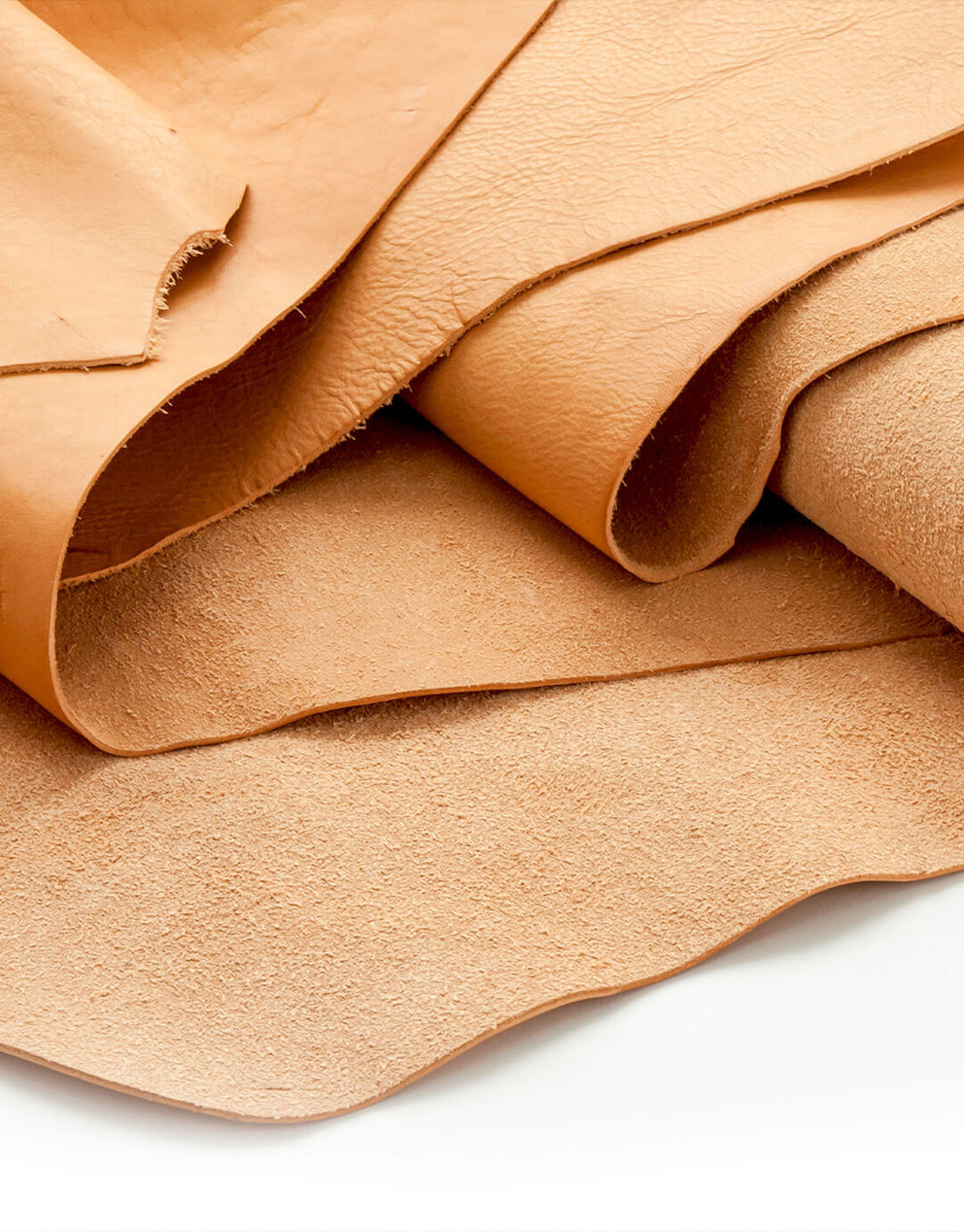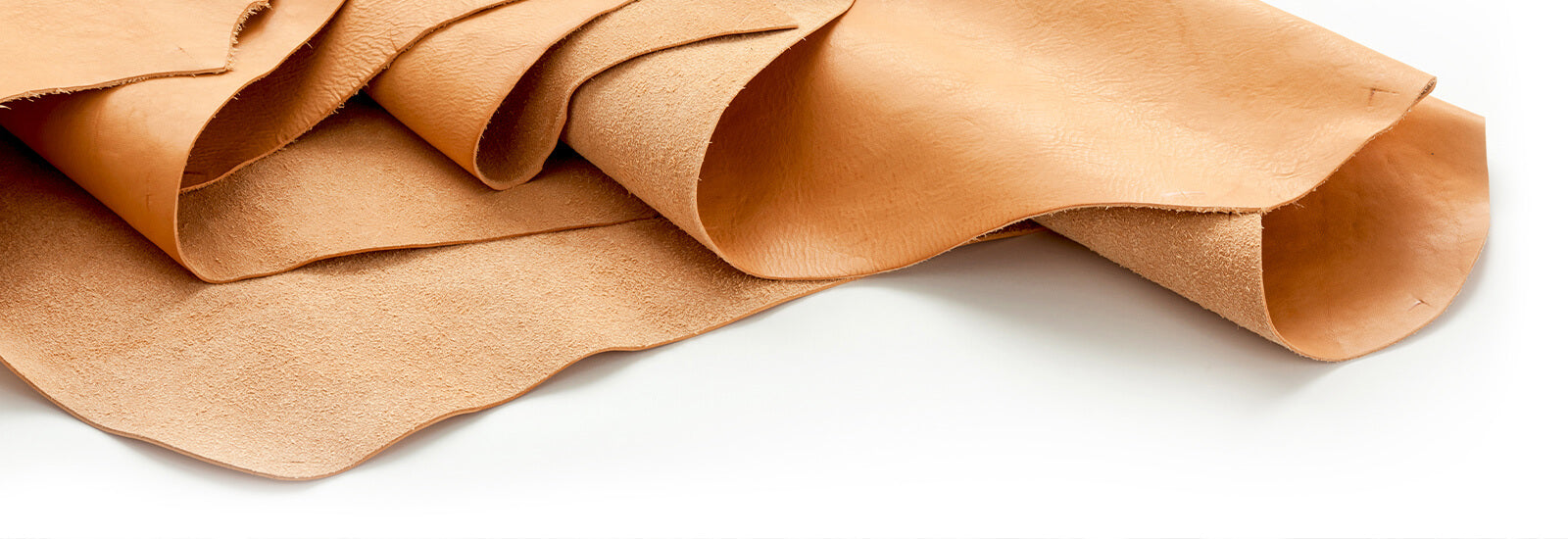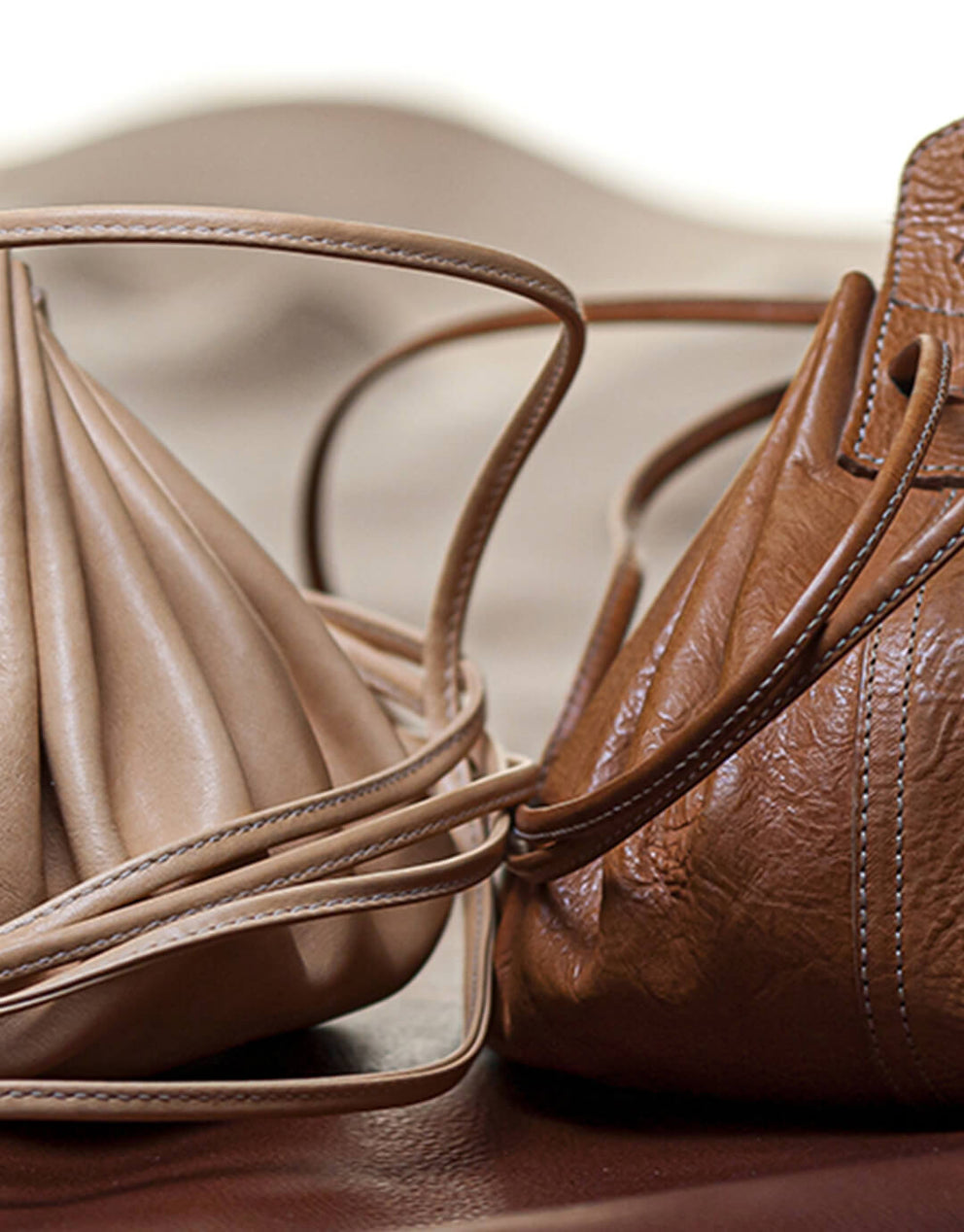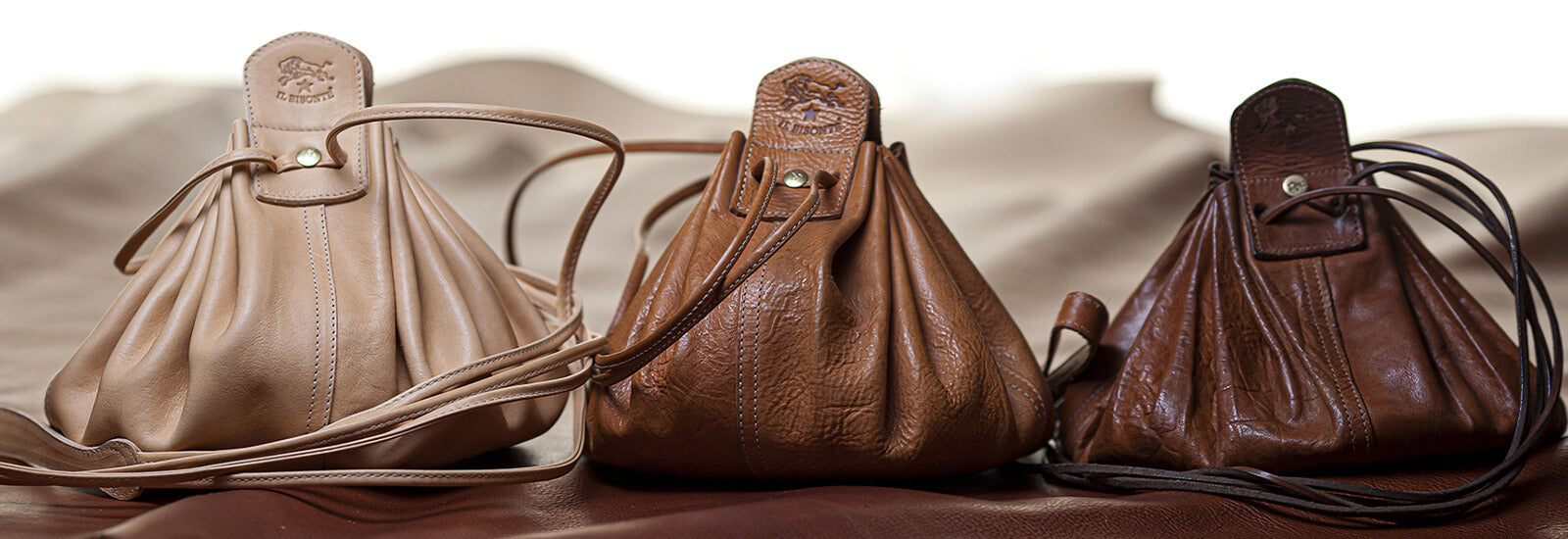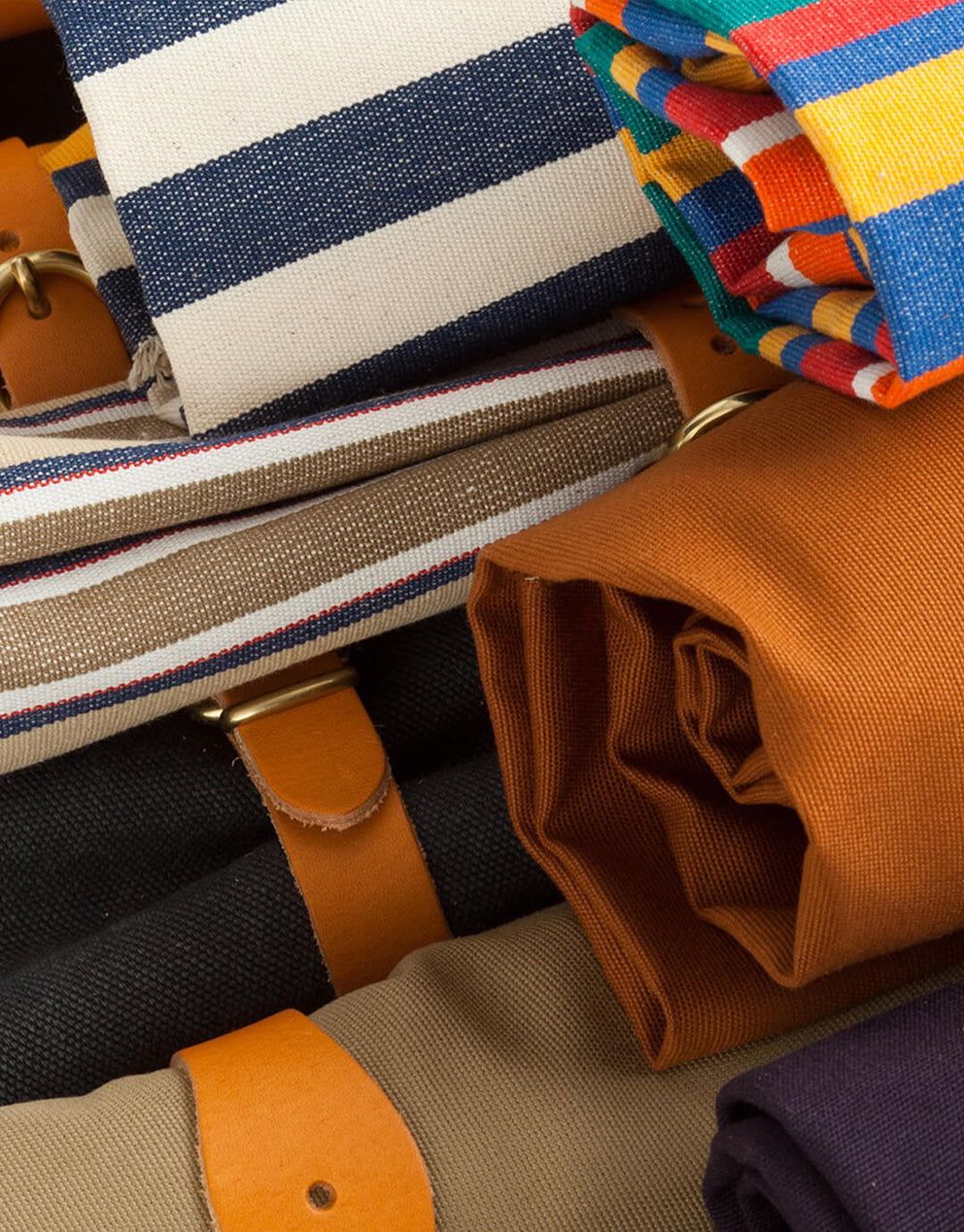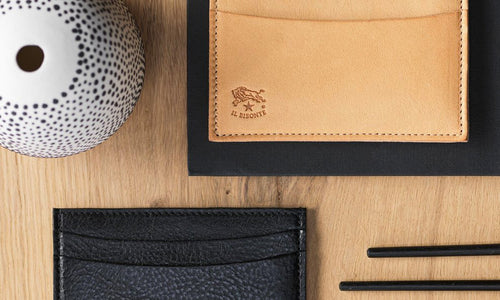In our supply chain, all production processes are continuously optimized to create a new circular economy model based on authentically sustainable high-quality craftsmanship.
Vegetable tanned leather
Our leather comes exclusively from animals reared for food consumption which would create serious disposal problems if they weren’t used.
In the vegetable tanning process neither chromium nor other substances which are harmful to man and the environment are used. The ban of toxic agents such as azo dyes, nickel and pentachlorophenol reduces the risk of intolerances related to the daily use of bags and small leather goods which are well tolerated even by those allergic to heavy metals. Thanks to its chemical-biological characteristics, vegetable-tanned leather can be easily disposed of.
Even most of the substances used in its leather-processing are reclaimed, processed and reused in other sectors. The hair removed from raw hides, for example, is reused in agriculture as a fertilizer, while the sludge from the purifiers is reused to produce bricks.
Why it's sustainable leather
Our leather comes exclusively from animals reared for food consumption which would create serious disposal problems if they weren’t used.
In the vegetable tanning process neither chromium nor other substances which are harmful to man and the environment are used. The ban of toxic agents such as azo dyes, nickel and pentachlorophenol reduces the risk of intolerances related to the daily use of bags and small leather goods which are well tolerated even by those allergic to heavy metals. Thanks to its chemical-biological characteristics, vegetable-tanned leather can be easily disposed of.
Even most of the substances used in its leather-processing are reclaimed, processed and reused in other sectors. The hair removed from raw hides, for example, is reused in agriculture as a fertilizer, while the sludge from the purifiers is reused to produce bricks.
Types of leather


CLASSIC LEATHER
We use only full-grain leather, the most natural in its category and among the most valuable on the market. Its typical wrinkles and small superficial inconsistencies testify to its naturalness and high quality.
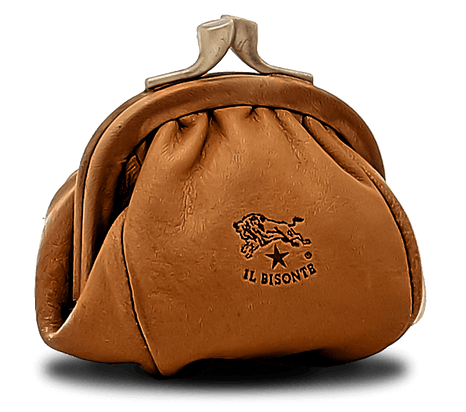

VINTAGE LEATHER
In addition to classic leather we also use “vintage leather” which undergoes a special process that further softens the skin and immediately gives it a lived-in effect mainly used in the men’s collections and for sportier designs.


METALLIC LEATHER
Metallic leather, which is obtained by applying a coloured vegetable film, ages like any other without the typical “peeling” that can occur with chemically-treated colored leather.
How it's made
Quality takes time and our leather is no exception. No fewer than 20 days pass from when the salt-preserved raw hides begin to be processed to when they are ready to be used. The entire production process takes place within the tannery, where the hides are processed in large cylindrical containers in weathered and watertight wood, similar to gigantic washing machines.
The leather is then processed with animal fats, and tannin and anilines – both plant-based, then left to dry. After the drying period comes “follonatura,” a water-less procedure that uses heat to break up the inner fibers of the leather, making it particularly soft to the touch. During this phase it is decided whether to highlight a particular grain or make it visually more homogeneous.
How and why it's aged
Tanners repeat this all the time: in order to really understand the quality and authenticity of a leather bag or accessory, you have to put it to the test of time. Immediately after tanning, in fact, it is not easy to distinguish chemically-tanned from vegetable-treated leather. The only persuasive proof of its naturalness is its ability to age beautifully.
When all Il Bisonte vegetable tanned leather products age they do not degenerate, even those that are dyed.
All our cowhide products age well without losing their appeal.
Its origin
The art of vegetable tanning has prehistoric origins, well documented throughout Tuscany. In ancient times, vegetable tanned leather, thanks to its extraordinary resistance to wear, was mainly used to make shoes for shepherds and soldiers, and sacks for hunting.
The tanning process already had strict rules in place by the Middle Ages and the Renaissance. They had been established by the Arte Minore dei Cuoiai (Tanners Guild) Statute drawn up by master craftsmen who were heirs to the centuries-old artisan tradition.
Alongside and together with vegetable tanned leather, suede and raffia, Il Bisonte's creations have always used high quality fabrics: thread-by-thread colored cotton and linen fabrics; wool cloths produced with traditional nineteenth-century methods as resistant as technical fabrics.
